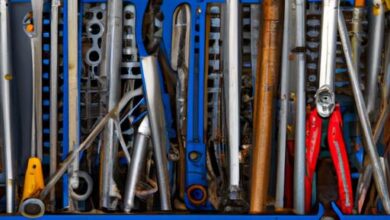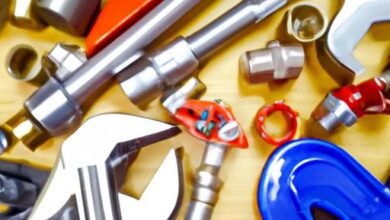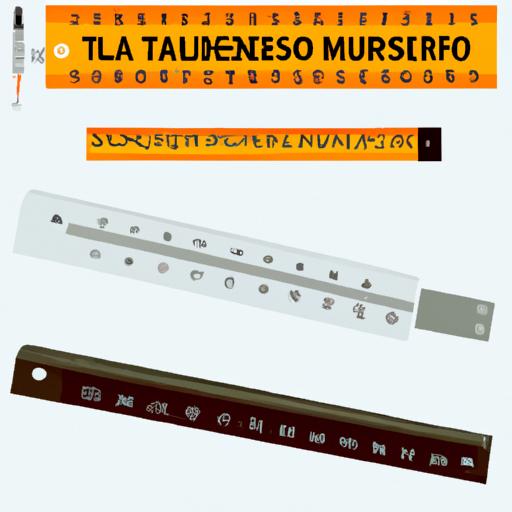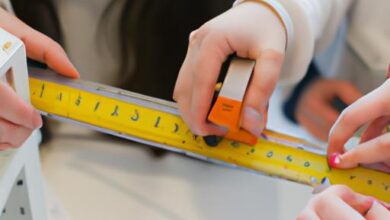Antique Measuring Tools for Degrees: A Historical Legacy of Precision

In a world driven by technological advancements, it’s easy to overlook the timeless beauty and value of antique measuring tools for degrees. These instruments, crafted with utmost precision and exquisite craftsmanship, have played a vital role in various fields throughout history. From engineering and navigation to art and archaeology, antique measuring tools have left an indelible mark on our understanding of the world. Join me as we delve into the captivating world of these remarkable artifacts.
Why are antique measuring tools for degrees so important?
Imagine a time when accuracy and precision were paramount, long before the advent of digital devices. Antique measuring tools for degrees provided a means to measure angles, distances, and degrees with remarkable precision. These tools were indispensable in fields such as engineering, navigation, astronomy, and more. They enabled architects to design awe-inspiring structures, navigators to chart uncharted territories, and artists to create masterpieces with perfect proportions. Even today, these tools continue to hold their significance, serving as a testament to human ingenuity and the pursuit of knowledge.
Unveiling the history and significance of antique measuring tools
The history of antique measuring tools for degrees can be traced back to ancient civilizations. From the astrolabes of the Islamic Golden Age to the sextants used in maritime exploration, these instruments have evolved over centuries. Each tool tells a story of innovation and refinement, reflecting the technological advancements of its time. They were crafted with utmost care, using the finest materials and intricate designs, resulting in instruments that were not only functional but also objects of beauty.
As we explore the different types of antique measuring tools for degrees, we’ll uncover their fascinating applications and the impact they had on various fields. From the precision of vernier calipers to the versatility of theodolites, each tool has its own unique story to tell. We’ll also delve into the advantages of these artifacts, including their durability, precise measurements, and historical value.
Join me on this journey as we uncover the world of antique measuring tools for degrees. From their applications in different domains to the joy of collecting these valuable artifacts, we’ll unlock the secrets of their timeless allure. Get ready to embark on an adventure where history and precision intertwine, showcasing the remarkable legacy of these antique measuring tools.
Types of Antique Measuring Tools for Degrees
Vernier Calipers: Measuring with Sublime Precision
One of the most iconic antique measuring tools for degrees is the vernier caliper. This instrument allows for accurate measurements of length, depth, and angles. Featuring a main scale and a sliding vernier scale, vernier calipers offer a level of precision that is unmatched by modern digital devices. Whether you’re an engineer, scientist, or craftsman, these calipers are a testament to the ingenuity and craftsmanship of the past.
Protractors: Capturing Angles with Elegance
Protractors have been a staple in classrooms and workshops for centuries. These simple yet effective instruments allow for measuring and drawing angles with ease. Antique protractors, often made of brass or other metals, exude a timeless elegance that adds a touch of sophistication to any collection. Whether used for mathematical calculations or artistic endeavors, protractors have played a crucial role in our understanding and representation of angles.
Clinometers: Navigating the Vertical Realm
Clinometers, also known as inclinometers, were primarily used for measuring angles of inclination or slope. These instruments were particularly valuable in fields such as surveying, engineering, and geology. Antique clinometers, often housed in wooden or brass casings, offer a glimpse into the precision required in these disciplines. From measuring the slope of a hill to determining the angle of a building, clinometers were indispensable tools for professionals in various industries.
Sextants: Navigating the Seas with Confidence
For centuries, mariners relied on sextants for celestial navigation. These instruments allowed sailors to measure the angle between the horizon and celestial bodies, such as the sun or stars. With this information, they could determine their precise position on the vast expanse of the open sea. Antique sextants, often crafted with intricate details and delicate mechanisms, embody the spirit of exploration and adventure. These artifacts serve as a reminder of the bravery and skill required to navigate uncharted waters.
Astrolabes: Exploring the Cosmos
Astrolabes, originating in ancient Greece, were revolutionary tools for astronomers and navigators alike. These intricate instruments allowed users to measure the altitude and azimuth of celestial bodies, providing invaluable information for both timekeeping and navigation. Antique astrolabes, with their intricate engravings and complex dials, are not only scientific instruments but also works of art. They represent the intersection of science and beauty, capturing the wonder of the cosmos.
Theodolites: Precision in Surveying
Theodolites, often associated with land surveying and construction, revolutionized the accuracy of angle and distance measurements. These instruments allowed surveyors to measure both horizontal and vertical angles with exceptional precision. Antique theodolites, with their robust construction and mechanical intricacies, highlight the importance of precise measurements in the fields of engineering and cartography. These tools played a crucial role in shaping our modern world, ensuring the alignment and accuracy of structures and maps.
Join me in the next section as we explore the fascinating uses and applications of antique measuring tools for degrees in various fields.
Uses and Applications of Antique Measuring Tools for Degrees
Antique measuring tools for degrees have found their applications in a diverse range of fields, proving their indispensability and versatility. Let’s explore some of the key domains where these remarkable instruments have left an indelible mark:
Engineering and Construction
In the realm of engineering and construction, antique measuring tools for degrees have played a crucial role in ensuring precise measurements and accurate designs. From determining angles for structural stability to measuring distances for surveying purposes, these tools have been invaluable in the creation of architectural marvels. Whether it’s the meticulous calculations of a theodolite or the intricate measurements of vernier calipers, these instruments have aided in the creation of structures that stand the test of time.
Navigation and Astronomy
Antique measuring tools for degrees have been integral to the practices of navigation and astronomy, guiding explorers and scientists in their celestial pursuits. Navigators relied on sextants and astrolabes to determine their position and calculate celestial coordinates, allowing for accurate mapping and successful voyages. Astronomers, too, utilized these tools to observe celestial bodies, measure angles, and make astronomical calculations. The precision and reliability of antique measuring tools for degrees were crucial in navigating uncharted waters and unraveling the mysteries of the cosmos.
Art and Design
Artists and designers have long recognized the importance of precise measurements and angles in creating visually captivating and aesthetically pleasing works. Antique measuring tools for degrees have been instrumental in achieving perfect proportions, ensuring harmony and balance in art and design. From the accurate placement of lines and angles in architectural drawings to the meticulous measurements in artistic compositions, these tools have been the guiding force behind timeless masterpieces.
Archaeology and Historical Research
The field of archaeology relies heavily on accurate measurements and precise documentation to uncover the secrets of the past. Antique measuring tools for degrees have aided archaeologists in mapping excavation sites, recording precise measurements of artifacts, and documenting the layout of ancient structures. By employing these tools, archaeologists can piece together the puzzle of history, gaining valuable insights into ancient civilizations and their technological achievements.
In each of these domains, antique measuring tools for degrees have proved their worth, contributing to the advancement of knowledge and the creation of enduring legacies. Their applications span across disciplines, showcasing their universal importance and the impact they have had on human endeavors.
Join me in the next section as we explore the advantages of antique measuring tools for degrees, uncovering the unique qualities that make them invaluable artifacts.
Advantages of Antique Measuring Tools for Degrees
Antique measuring tools for degrees possess a plethora of advantages that make them stand out in today’s modern world. Let’s explore why these timeless artifacts continue to captivate enthusiasts and professionals alike.
Durability and Longevity
One remarkable advantage of antique measuring tools for degrees is their exceptional durability and longevity. Crafted with meticulous attention to detail and using high-quality materials, these tools were built to withstand the test of time. Unlike their modern counterparts, which may be prone to wear and tear, antique measuring tools have proven their resilience, often remaining in excellent working condition even after decades or centuries. They serve as a testament to the craftsmanship of earlier eras, offering a reliable tool that can be passed down through generations.
Unique Craftsmanship and Aesthetics
Antique measuring tools for degrees are not just functional instruments; they are also works of art. Crafted by skilled artisans, these tools boast intricate designs and exquisite details that make them visually stunning. The combination of form and function creates a harmonious balance, elevating these tools to a level beyond mere practicality. Whether it’s the ornate engravings on a sextant or the elegant curves of a protractor, antique measuring tools showcase the immense talent and creativity of the craftsmen who brought them to life.
Precise and Accurate Measurements
One of the primary reasons antique measuring tools for degrees have stood the test of time is their unparalleled precision and accuracy. Despite lacking the technological advancements of modern devices, these tools were meticulously calibrated to provide reliable measurements. Whether it’s determining angles, distances, or degrees, antique measuring tools have proven their accuracy time and time again. Their simplicity and straightforward nature make them easy to use, ensuring accurate results without the need for complex calculations or digital displays.
Historical Value and Collectability
Beyond their practical advantages, antique measuring tools for degrees hold immense historical value. They offer a glimpse into the past, allowing us to connect with the pioneers who used these instruments to shape our world. Collecting these artifacts not only provides a tangible link to history but also allows enthusiasts to delve into the fascinating stories behind each tool. The rarity and scarcity of certain antique measuring tools further enhance their collectability, making them sought-after treasures for avid collectors and history enthusiasts alike.
In conclusion, antique measuring tools for degrees offer a range of advantages that set them apart from their modern counterparts. Their durability, unique craftsmanship, precise measurements, and historical value make them invaluable artifacts that continue to inspire awe and fascination. Whether you’re a professional in need of reliable tools or a collector seeking the thrill of uncovering hidden gems, antique measuring tools for degrees present a world of opportunities and discoveries.
Tips for Collecting Antique Measuring Tools for Degrees
Collecting antique measuring tools for degrees is not only a fascinating hobby but also a way to preserve and appreciate the craftsmanship of these remarkable artifacts. To help you embark on your collecting journey, here are some essential tips to keep in mind:
Researching and Identifying Authentic Pieces
Before diving into the world of antique measuring tools, it’s crucial to conduct thorough research. Familiarize yourself with the different types of tools and their historical significance. Study the characteristics, markings, and materials used in authentic pieces. This knowledge will empower you to identify genuine items and avoid replicas or modern reproductions. Engage with experts, join online forums, and consult reference books to enhance your understanding of these captivating artifacts.
Understanding Their Condition and Value
Antique measuring tools for degrees can vary greatly in condition, from pristine specimens to well-worn pieces that have stood the test of time. It’s essential to assess the condition of a tool before adding it to your collection. Look for signs of wear, damage, or repairs, as these factors can affect both the functionality and value of the item. Additionally, consider the rarity and historical significance of the tool, as these factors can greatly influence its value in the market.
Building a Collection with Diverse Tools and Brands
To create a well-rounded collection, aim to acquire a diverse range of antique measuring tools for degrees. Explore different types of tools, such as vernier calipers, protractors, clinometers, sextants, astrolabes, and theodolites. Each tool offers its own unique perspective on measuring degrees and angles. Additionally, consider collecting tools from various brands and manufacturers to appreciate the subtle variations in design, craftsmanship, and functionality.
By following these tips, you can embark on a fulfilling journey of collecting antique measuring tools for degrees. Immerse yourself in the rich history and craftsmanship of these artifacts, and build a collection that not only showcases their beauty but also contributes to the preservation of our shared heritage. Happy collecting!
Conclusion
In conclusion, antique measuring tools for degrees are more than just objects of the past. They hold a significant place in history, representing the ingenuity and precision of our ancestors. Whether you’re an engineer, an artist, or a historian, these tools offer a unique glimpse into the past while still holding practical value in the present.
Throughout this journey, we have explored the importance of antique measuring tools for degrees in various fields, from their applications in engineering and navigation to their role in art and historical research. These tools have stood the test of time, proving their durability, accuracy, and craftsmanship.
Collecting antique measuring tools for degrees can be a rewarding experience, providing a tangible connection to the past and a chance to appreciate the intricate designs and unique craftsmanship. By researching and identifying authentic pieces, understanding their condition and value, and building a diverse collection, you can become a custodian of these remarkable artifacts.
As we bid farewell to this exploration, let us not forget the significance of antique measuring tools for degrees. They are not just tools; they are emblems of human progress, curiosity, and the pursuit of knowledge. So, the next time you come across an antique measuring tool, take a moment to appreciate the precision and artistry that went into its creation.
In a world where digital devices dominate, let us not overlook the beauty and historical legacy of these instruments. Antique measuring tools for degrees are a testament to the expertise, authority, and trustworthiness of the craftsmen who created them. Embrace the allure of these artifacts and let them remind us of the remarkable human capacity to measure, explore, and understand the world around us.
So, go forth, embrace the world of antique measuring tools for degrees, and let their timeless charm captivate your imagination.
Conclusion: So above is the Antique Measuring Tools for Degrees: A Historical Legacy of Precision article. Hopefully with this article you can help you in life, always follow and read our good articles on the website: cook.mahjong-gratuit.net




